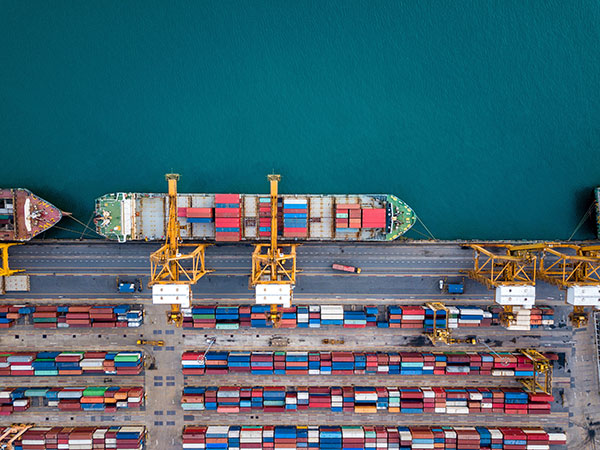From facility security to insider threats and supply chain disruptions, here’s how manufacturers can better protect their businesses.
By Fred Burton, Executive Director of Protective Intelligence
Owners and operators of manufacturing companies face a challenging and dynamic security environment both inside their companies and within their global supply chains, a complex problem that crosses many realms of security expertise.
Companies with global supply chains may be monitoring happenings in the South China Sea, a war in Ukraine, and disruption of global shipping lanes caused by Houthi rebels firing on ships transiting the Red Sea. At home, security teams are managing a wide range of internal threats that can cause substantial losses, problems including cargo theft, and the pervasive threat of workplace violence.
To remain secure and resilient, security teams need holistic tools and technology that forge chaos into order — to systematize the complex environment into nimble, flexible, and proactive flows of information, coupled with decision making tools that can help these professionals to quickly take action to secure their personnel, facilities, and operations. Let’s take a look at three aspects of the manufacturing threat landscape to understand how emerging technology facilitates a safer manufacturing base that minimizes business disruption.
Product theft and tampering inside the workplace is no doubt costly to a manufacturer, and there are few, if any, businesses that haven’t seen raw materials, finished products, or equipment disappear.
Even with the development of advanced cargo tracking technologies, cargo theft continues to be a serious concern for many manufacturers, with more than $44 million in shipments reportedly stolen in the second quarter of 2023 alone. In many cases, these heists are conducted with some form of assistance from insiders, but investigations to uncover the offenders can be costly and complex. Quite frequently, it requires the coordination of professionals across multiple geographies and may include intervention at all steps in the production process, from detailed auditing of access control systems in multiple locations, to undercover investigators posing as workers, to open source analysis to determine how and where stolen property might be sold.
The complexity of the problem is daunting, and the amount of information that must be sifted through to find answers increases at every step of the process. Solving previous thefts and ensuring the integrity of the larger supply chain can require meticulous long term information collection from a variety of sources, coupled with comprehensive analysis of the information you uncover. When investigations can span months and even years, the key is having a system to keep everything organized.

With stringent manufacturing schedules, expedited orders, and various suppliers, vendors, and customers located around the globe, disruptions to supply chains can have cascading effects across industries and economies. Severe weather events wreak havoc on infrastructure, costing companies billions, while geopolitical conflicts may cause the interrupted transit of goods or materials, explicit targeting, accidents, or damage. Attacks carried out by Houthi rebels in Yemen have recently forced cargo vessels to reroute to avoid the Suez Canal, which previously handled 12% of global trade.
From a due diligence perspective, global companies are also under pressure from stakeholders to share information on the materials and components found within company products, where and how the components were produced, and under what conditions. In many cases, corporate security departments are saddled with digging into complex downstream suppliers.
When it comes to the supply chain, quickly reacting to risk is important, but it isn’t enough. Security teams need access to information that can help them prepare for unexpected events that may impact their business locations and disrupt complex processes like the manufacturing of goods and transit of materials. This could include problems like inclement weather, acts of terrorism, organized protests from activists, union strikes, and the like.
Monitoring these real-time events on an ongoing basis and having a system that alerts security teams to emerging and upcoming situations can help prepare for and minimize disruptions. Awareness pays dividends, but it requires the ability to gather intelligence and make it actionable. Technology platforms can serve as a one stop aggregator for this sort of geographically decentralized information, helping collect data and take action quickly.
Manufacturing workers often find themselves in high-pressure environments tasked with physically demanding projects, the operation of heavy machinery and lifting heavy objects, and long working hours. When put in these scenarios, incidents ranging from verbal abuse and physical altercations to theft and fraud can emerge, jeopardizing the safety of other workers, supervisors, and surrounding businesses.
Manufacturing, warehousing, and distribution workers feel it’s very important that their employer prioritize their physical safety. Organizations depend on their security teams to monitor and proactively identify threats that may impact the well-being of their employees, but that work cannot be done in a vacuum. It requires the cooperation of workers and management to report suspicious behavior, a process in place to collect and evaluate reports, and consistent processes to conduct assessments of potential threats.
Comprehensive training programs that promote safety and foster a culture of open communication — when you see something, say something – can make the difference between preventing an incident and tragedy. Making it easy for employees to report suspicious behavior can provide early awareness of a problem, giving more time to assess the situation and determine the most appropriate and consistent response. When coupled with technology that automates workflows, security teams can coordinate quick internal responses to reported incidents. The early detection of these threats and risk levels can help activate plans when it’s necessary to pivot from standard operations.
The 30,000-foot view in the manufacturing sector is one of increasing security complexity. Security teams have never had so much real-time information to help secure their products, but with the rise of online marketplaces, criminals have never had more avenues to sell diverted product. Supply chains are under pressure from global geopolitical tensions, but as onshoring and near-shoring gain momentum, security teams that monitor those supply chains will need to adapt quickly to mitigate threats in new locations. While the potential for information overload is high, deploying appropriate technology solutions can help security teams integrate their most critical information sources with emerging threat data, using technology to ensure critical signals aren’t missed in the noise. While the problem is more complex than ever, security teams have more resources than ever to help ensure their people, facilities and operations stay safe.

Fred Burton is one of the world’s foremost authorities on protective intelligence, security, and counterterrorism. As Executive Director of Protective Intelligence at Ontic and a member of the Ontic Center for Connected Intelligence, he provides security strategies and best practices to physical security leaders at major corporations, advising on how to optimize their security programs, streamline protective intelligence initiatives and keep their people safe. Burton has previously served as Chief Security Officer at Stratfor and is a former special agent with the U.S. Diplomatic Security Service (DSS). He is a New York Times best-selling author, host of the Ontic Protective Intelligence podcast, and regularly appears in major news and media outlets.
In this episode, I sat down with Beejan Giga, Director | Partner and Caleb Emerson, Senior Results Manager at Carpedia International. We discussed the insights behind their recent Industry Today article, “Thinking Three Moves Ahead” and together we explored how manufacturers can plan more strategically, align with their suppliers, and build the operational discipline needed to support intentional, sustainable growth. It was a conversation packed with practical perspectives on navigating a fast-changing industry landscape.